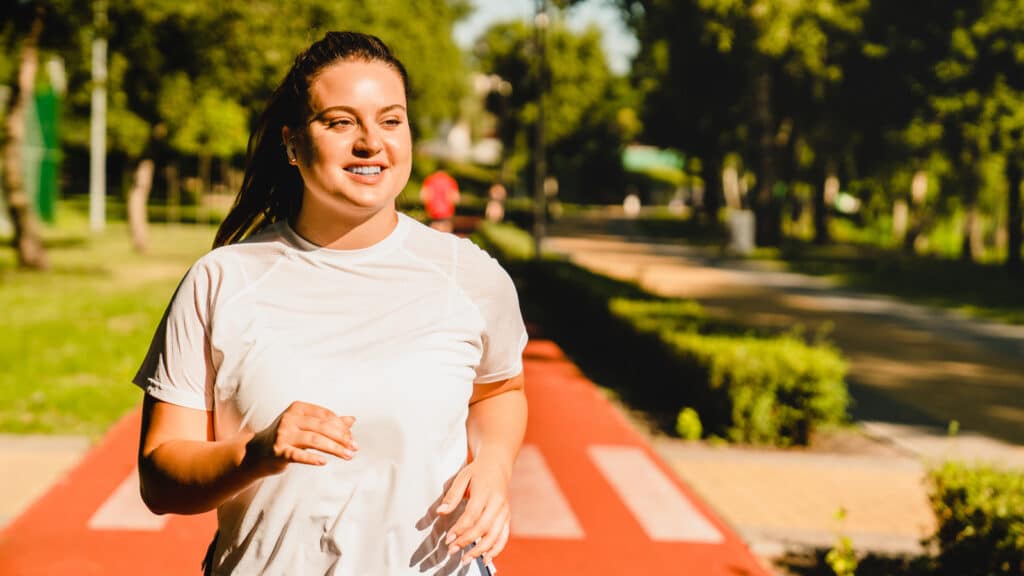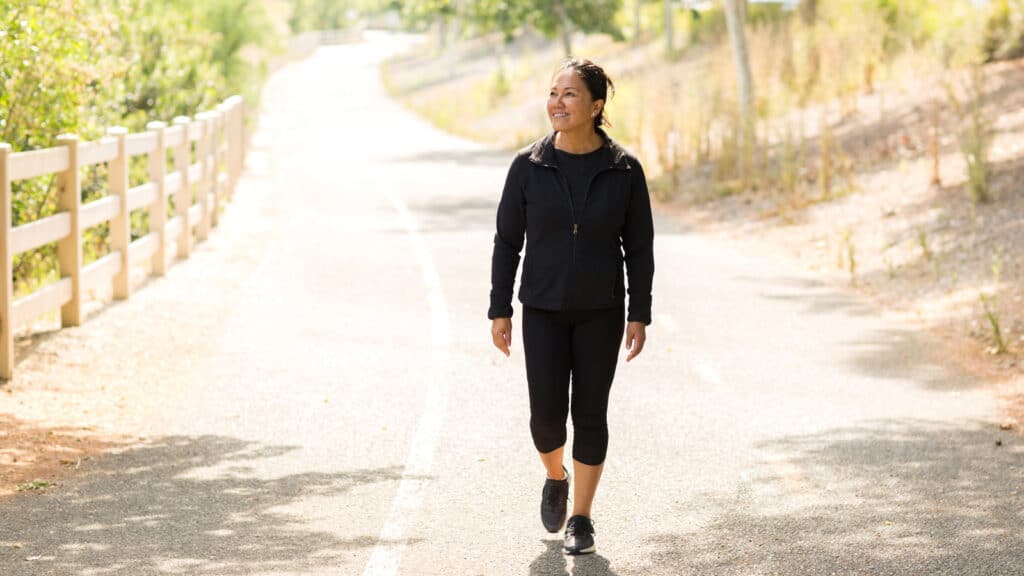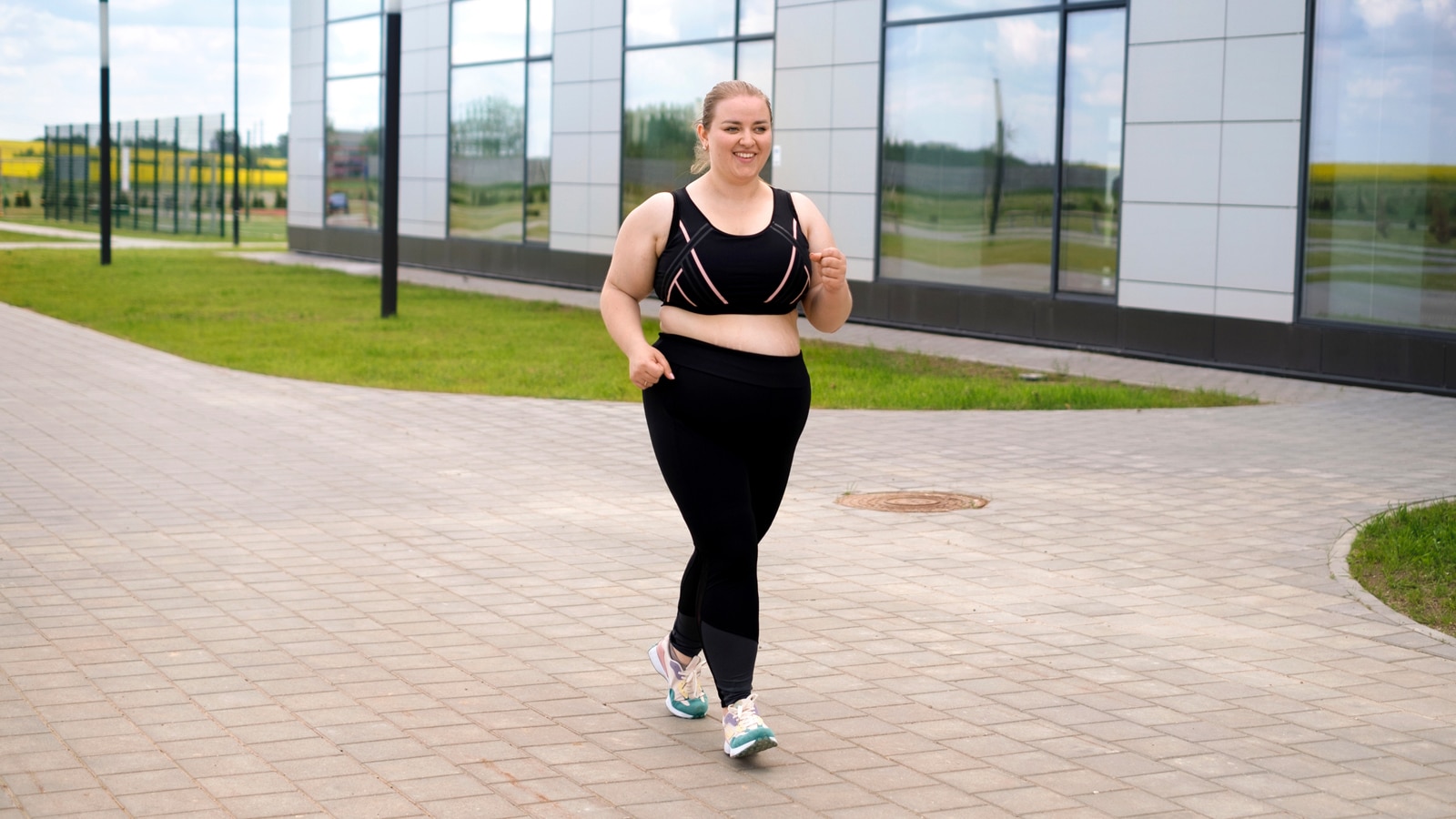How To Start A Walking Program For Beginners
If you’re trying to get fit or walk for weight loss, this guide will tell you everything you need to know to start a walking program.
Exercise is essential for good health. The Physical Activity Guidelines For Americans recommend at least 150 to 300 minutes of moderate-intensity aerobic physical activity per week. That’s about 25 to 40 minutes a day and walking is the ideal exercise.
Walking is affordable and you can walk anywhere. It’s easy to fit in a quick walk during your lunch break or on your way to work.
If you’re walking for weight loss, walking for 30 minutes will burn around 130 calories for a 160-pound adult – you’ll burn more calories if you’re heavier. Calories burned will depend on your weight, walking pace, and current fitness level.
Related post: How Much Are 10,000 Steps In Miles And Calories Burned?

Health Benefits Of Walking
Start a walking plan and enjoy the positive effects of being fitter and in better health:
- Improved Fitness Level – brisk walking increases your heart rate and improves your cardiovascular health.
- Burn Calories – Walking is one of the best ways to burn calories as part of a weight loss plan.
- Protection Against Diseases – Regular walking helps protect against heart disease, stroke, high blood pressure, cancer, and type 2 diabetes.
- Stronger Bones and Muscles – protect against osteoporosis and improves the strength of core and leg muscles.
- Great for Mental Health – Improves moods and helps you sleep better, walk breaks are good for stress reduction.
- Increases Energy Levels – feel better during the day and benefit from an improved immune system.
Related post: Fast Walkers Live Longer (It’s Official)
Preparing For A Walking Program
Before starting a walking program, there are some basics you should do to prepare:
Get the right shoes
Invest in supportive and comfortable walking shoes or trainers. Visit a specialist outdoor or running shoe store for advice and help to get the right fit.
Clothing
You can start walking in any clothing if it’s about town – making short walks easy to fit into your day. Non-restrictive clothing is best. If you’re walking outdoors check the weather forecast – you may need to take a raincoat.
If you’re walking on trails, follow these tips for hiking for beginners to stay safe and dress appropriately.
Hydrate
For longer walks make sure you take some water with you and drink to thirst throughout your walk to stay hydrated.
Plan Your Walks
It helps to follow a walking schedule. This keeps you motivated to walk regularly. Map out a walking route and set specific times for when you’ll go for walks each week – stick to your plan as much as possible.
Consider mixing up different types of terrain such as flat paths or add hills for extra intensity.
Warm Up Before You Start
Don’t start walking at a very fast pace. Start slowly and take time to build up to a faster pace. If you start off too fast you’ll be out of breath and struggling by the time you’ve walked a block!

When To Get A Medical Before Starting A Walking Program
It’s a good idea to get medical advice if you’re new to exercising or haven’t exercised for a long time.
Your healthcare provider can advise on the best walking program for you and any precautions to take while exercising. Talk to your doctor if you have an existing medical condition such as joint pain, heart disease, diabetes, high blood pressure, or a history of stroke.
If you’re pregnant make sure you ask your doctor about any risks before starting a new walking program. Most women continue to exercise safely throughout their pregnancy.
Related post: Walking For Weight Loss: Everything You Need To Know
Taking The First Step
If you’re starting your first walking program, try my Fat Buster Walking Challenge. This walking for weight loss program gradually builds distance and intensity until you’re walking 5 miles every day.
Some people may find walking every day too challenging at first. Instead aim to walk three to five days a week and take some rest days to recover between walking sessions.
You can measure your efforts in steps with a fitness walk tracker, use your phone with a walking app such as Strava or MapMyWalk, or accurately record distance with an Apple watch or GPS device.
For most people, it’s enough to record time – especially when you first start walking. Aim to hit the recommended walking time of 150 to 300 minutes a week for moderate-intensity physical activity.
Related post: How Many Steps In One Mile Running Or Walking?

Walking Pace
Your pace makes a huge difference to your fitness levels and calorie burn. If you’re walking faster you’ll burn more calories.
Aim for a brisk walking pace. Brisk walking is about 3 miles an hour on good flat paths. It will vary depending on your fitness. You should be able to talk easily at this pace but you’ll feel you’re making an effort.
When you’re new to walking it’s a good idea to vary your pace, mixing brisk walking with some walks at an easy pace. This will give your muscles a chance to recover.
How To Walk Properly
Walking is of course a natural activity. But compared with children, older adults have picked up so many bad habits many of us have forgotten how to walk properly!
Spending a session with a walking coach can be the best way to correct your posture for walking.
The basics are:
- stand up straight,
- lean forward very slightly but keep your body in a straight line
- avoid arching your back
- engage your core muscles
- engage your glutes
- make sure your hips are level
- look 10 to 20 feet ahead as you walk
- keep your chin parallel to the ground
- take small quick strides
- relax your shoulders and swing your arms
Arm swinging can help with forward momentum but don’t overdo it!
Walk Regularly
It’s regular walking and exercise that’s important. It’s better to walk three to five days a week than occasionally walk longer when the mood takes you.
Related post: How To Lose Weight Walking 2 Miles A Day

Set Realistic Goals
From setting your weight loss goal to fitness plans it’s best to be realistic. Doing too much too soon increases your risk of injury. Walking is a low-impact exercise that’s kind on your joints but you still need to build time and distance walked gradually.
Related post: How Much Walking For Weight Loss?
Follow A Walking Schedule
As you get fitter, adding variety to your walking program will help you stay motivated. Add walking intervals alternating brisk pace and easy pace walking and try walking up hills.
This walking for weight loss schedule includes daily walking workouts and schedules to help you add variety to your walking routine.
Read next: How To Get Results: Walking For Weight Loss
Running 101 Training Guides & Walking Schedules
5K Training Plans
- Couch To 5K Beginner Training Plan
- 12 Week 5K Training Plan
- 10 Week 5K Training Plan
- 8 Week 5K Training Plan
- 6 Week 5K Training Plan
- 4 Week 5K Training Plan
- 5K Training Plan Intermediate





